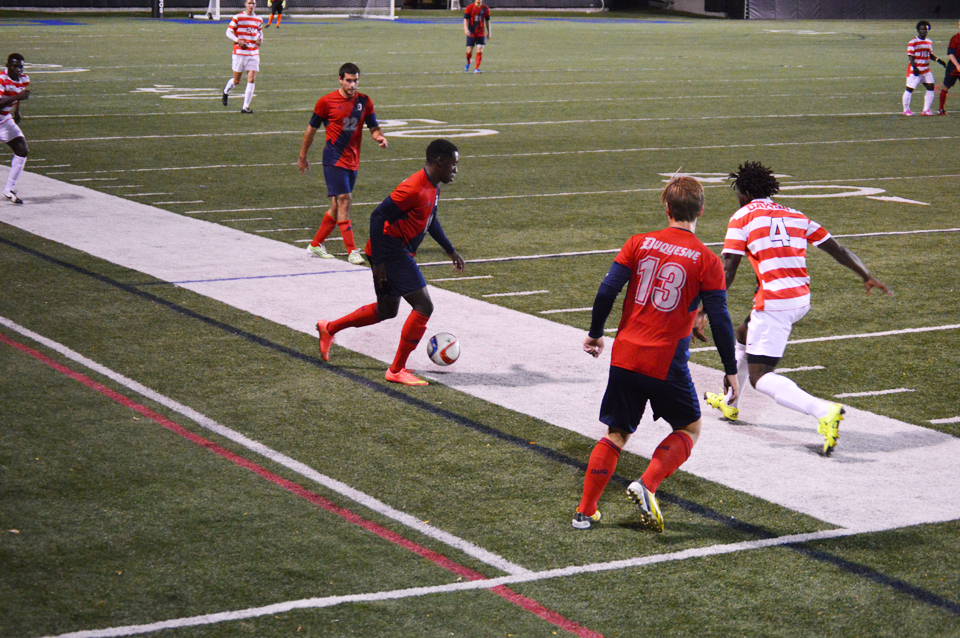According to the 2017 U.S. Census, 22 percent of Pittsburgh residents live below the poverty line. That means nearly 1 in 5 people on the streets of Pittsburgh are living in poverty, compared to the national average of 14.6 percent.
In recent months, there has been plenty of coverage about the unity of the people of Pittsburgh and how the community is so resilient. We recovered from the steel mills closing to become a technology and education hub. People came out in droves to honor the late Mac Miller. Even more recently we moved past the Pittsburgh synagogue shooting by rallying around that community. Yet, 1 in 5 people still deal with daily obstacles not to thrive, but to survive.
Due to this clear inequitable distribution of wealth in the city of Pittsburgh, Nicholas Cotter created the Pittsburgh Neighborhood Project to give insight and foster empathy for those from low-income backgrounds in these impoverished neighborhoods.
Cotter, a Carnegie Mellon University (CMU) graduate in social policy, can tell you poverty presents unique obstacles that can set people back from being successful. Cotter grew up primarily in Brookline and Carrick, but graduated from Seton La Salle after missing 114 days of school without a single visit from a social worker.
Luckily, after graduating from high school, Cotter was able to boost his GPA at the Pittsburgh Art Institute and got into Wheeling Jesuit University for his undergrad. This allowed him to pursue a graduate degree at CMU. Not everyone in those circumstances is as lucky as Cotter, though.
This history has led Cotter to study how social policy impacts individuals and how to best mitigate poverty through policy. However, this education cannot come from just data or anecdotal evidence, but a combination of both.
This is where the Pittsburgh Neighborhood Project comes in. The goal of the project is to educate people on the 90 communities that comprise the city of bridges through interviews with residents, photos of the locations Cotter travels to, an explanation of census data for each area and a historical write-up to explain how these neighborhoods have formed and changed.
At first, that sounds like a daunting task, not only for Cotter, but for those interested in following along with his findings.
“The goal there is to really do a snapshot and in some sense a deeper dive with those neighborhoods. So, each neighborhood will get a neighborhood profile,” Cotter said.
By breaking the larger narrative of Pittsburgh’s poverty into bitesize and easily digestible content, Cotter hopes to create a more holistic understanding of what each community is like. Through understanding the conditions that create poverty, the hope is to destigmatize low-income stereotypes so that policy, as well as the status quo, can change.
“We have some really wealthy neighborhoods that never change, and that’s really good if you get to live there. And we have some really poor neighborhoods that never change, and it’s really bad if you get to live there,” Cotter said.
This is where the poverty problem in Pittsburgh stems from. Neighborhoods like Squirrel Hill have historically had a wealthier population of individuals, and thus the wealth has been concentrated there.
Meanwhile, neighborhoods in the Hilltop like St. Clair Village have historically been less fortunate. St. Clair, for instance, has not been able to catch a break since the 1940s to early 1950s housing boom that has, according to the Hilltop Homes and Operating Plan, seen 80 percent of residents leave with no one to replace them.
Neighborhoods like St. Clair Village are the reason Cotter sees a need to bring more attention to these communities that seem to be stagnant. Meanwhile the areas that are now dealing with displacement problems, such as East Liberty, get more attention despite an equal need for recognition.
“In Pittsburgh, there are probably only a handful that are changing at a pace where we are seeing involuntary displacement or we are about to see involuntary displacement,” said Cotter.
However, he does not want to disregard displacement as an issue. For instance, Lawrenceville is a hotbed of social change that he thinks deserves more focus.
“Over the past probably 10 to 15 years, we’ve seen actually a different kind of gentrification and displacement which is not among low-income black renters,” said Cotter. “But, actually in Lawrenceville, it is a lot of low-income and fixed-income white homeowners who couldn’t keep up with the property taxes because those values are spiking like crazy.”
This rent spike happened after landlords stopped accepting housing vouchers, which is something Cotter urges people to look at as a potential link to displacement. Cotter also touches on unique cases like Manchester, where higher income white residents seem to be moving into the area, which means that lower-income residents have likely been moved out.
Overall, Cotter just wants to access the neighborhoods on a case-by-case basis to raise awareness of the problems in each of these communities, pushing an understanding of the problems people face to the forefront of our minds.
“This project is a much more intimate portrayal in just talking to stakeholders,” said Cotter. “Again, street-by-street exploration, my observations which are biased and talking to residents and then supplementing all of this with long-term and short-term data.”
For a closer look at the project and to see Cotter’s analysis of neighborhoods that interest you check out the Pittsburgh Neighborhood Project at:
www.pittsburghneighborhoodproject.blog
Correction: An earlier version of this article mistakenly stated that Cotter attended Brentwood High School instead of Seton La Salle. The story has since been updated.




